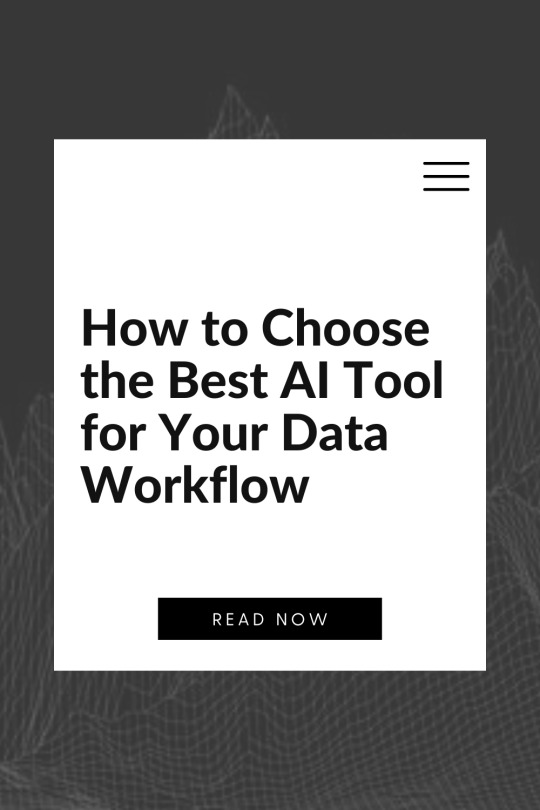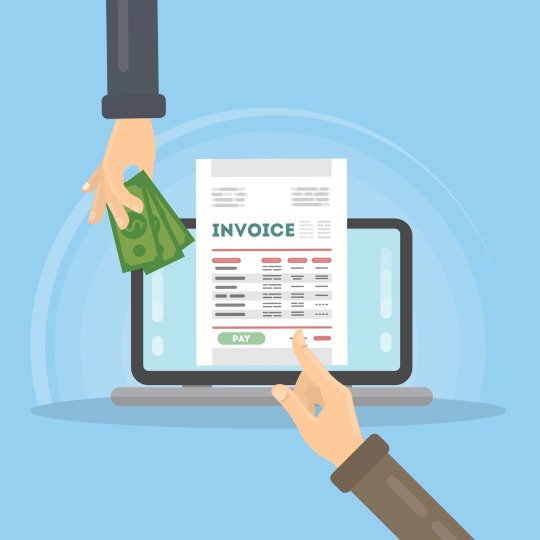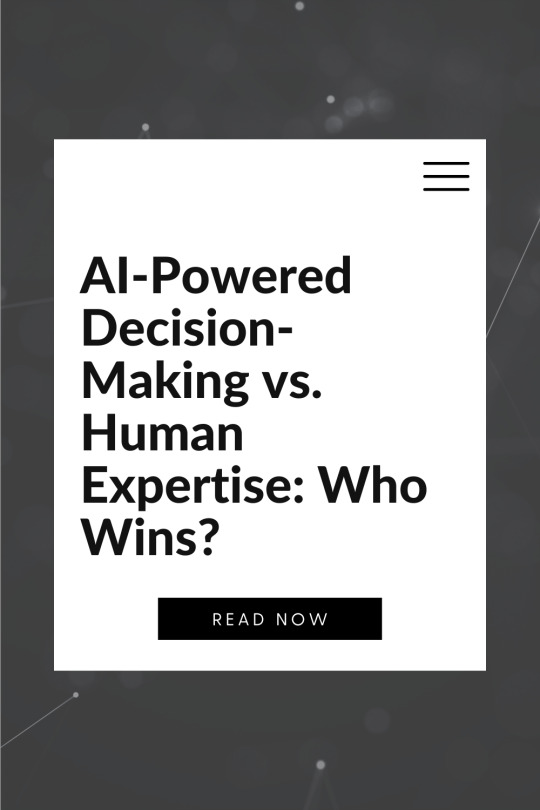#Data Processing Platform
Explore tagged Tumblr posts
Text



what if it was all a dream
#please. please#the power race is over. the line between console and pc is gone.#to reclaim their market consoles have to redistinguish themselves by focusing on unemulatable form factors rather than raw processing power#please let the ds and vita return#it will save games and tech in general. power isnt everything. in fact it's almost nothing.#it's only needed by heavy rendering and data handling programs. everyday programs and game design require very little#the largest and most mechanically detailed games ever made were programmed and run on frickin toasters#all the power today goes to bloated rendering engines and an ungodly mass of interpretation layers. ur mouse drivers are 100mb#please bring back system platform design instead of “box with overpriced apu and cheap thermals”
14 notes
·
View notes
Text

How to Choose the Best AI Tool for Your Data Workflow
AI isn’t just changing the way we work with data, it’s opening doors to entirely new possibilities. From streamlining everyday tasks to uncovering insights that were once out of reach, the right AI tools can make your data workflow smarter and more efficient. But with so many options out there, finding the one that fits can feel like searching for a needle in a haystack. That’s why taking the time to understand your needs and explore your options isn’t just smart, it’s essential.
In this guide, we’ll walk you through a proven, easy-to-remember decision-making framework: The D.A.T.A. Method: a 4-step process to help you confidently choose the AI tool that fits your workflow, team, and goals.

The D.A.T.A. Method: A Framework for Choosing AI Tools
The D.A.T.A. Method stands for:
Define your goals
Analyze your data needs
Test tools with real scenarios
Assess scalability and fit
Each step provides clarity and focus, helping you navigate a crowded market of AI platforms with confidence.
Step 1: Define Your Goals
Start by identifying the core problem you’re trying to solve. Without a clear purpose, it’s easy to be distracted by tools with impressive features but limited practical value for your needs.
Ask yourself:
What are you hoping to achieve with AI?
Are you focused on automating workflows, building predictive models, generating insights, or something else?
Who are the primary users: data scientists, analysts, or business stakeholders?
What decisions or processes will this tool support?
Having a well-defined objective will help narrow down your choices and align tool functionality with business impact.
Step 2: Analyze Your Data Needs
Different AI tools are designed for different types of data and use cases. Understanding the nature of your data is essential before selecting a platform.
Consider the following:
What types of data are you working with? (Structured, unstructured, text, image, time-series, etc.)
How is your data stored? (Cloud databases, spreadsheets, APIs, third-party platforms)
What is the size and volume of your data?
Do you need real-time processing capabilities, or is batch processing sufficient?
How clean or messy is your data?
For example, if you're analyzing large volumes of unstructured text data, an NLP-focused platform like MonkeyLearn or Hugging Face may be more appropriate than a traditional BI tool.
Step 3: Test Tools with Real Scenarios
Don’t rely solely on vendor claims or product demos. The best way to evaluate an AI tool is by putting it to work in your own environment.
Here’s how:
Use a free trial, sandbox environment, or open-source version of the tool.
Load a representative sample of your data.
Attempt a key task that reflects a typical use case in your workflow.
Assess the output, usability, and speed.
During testing, ask:
Is the setup process straightforward?
How intuitive is the user interface?
Can the tool deliver accurate, actionable results?
How easy is it to collaborate and share results?
This step ensures you're not just selecting a powerful tool, but one that your team can adopt and scale with minimal friction.
Step 4: Assess Scalability and Fit
Choosing a tool that meets your current needs is important, but so is planning for future growth. Consider how well a tool will scale with your team and data volume over time.
Evaluate:
Scalability: Can it handle larger datasets, more complex models, or multiple users?
Integration: Does it connect easily with your existing tech stack and data pipelines?
Collaboration: Can teams work together within the platform effectively?
Support: Is there a responsive support team, active user community, and comprehensive documentation?
Cost: Does the pricing model align with your budget and usage patterns?
A well-fitting AI tool should enhance (not hinder) your existing workflow and strategic roadmap.
“The best tools are the ones that solve real problems, not just the ones with the shiniest features.”
— Ben Lorica (Data scientist and AI conference organizer)
Categories of AI Tools to Explore
To help narrow your search, here’s an overview of AI tool categories commonly used in data workflows:
Data Preparation and Cleaning
Trifacta
Alteryx
DataRobot
Machine Learning Platforms
Google Cloud AI Platform
Azure ML Studio
H2O.ai
Business Intelligence and Visualization
Tableau – Enterprise-grade dashboards and visual analytics.
Power BI – Microsoft’s comprehensive business analytics suite.
ThoughtSpot – Search-driven analytics and natural language querying.
DataPeak by Factr – A next-generation AI assistant that’s ideal for teams looking to enhance decision-making with minimal manual querying.
AI Automation and Workflow Tools
UiPath
Automation Anywhere
Zapier (AI integrations)
Data Integration and ETL
Talend
Fivetran
Apache NiFi
Use the D.A.T.A. Method to determine which combination of these tools best supports your goals, data structure, and team workflows.
AI Tool Selection Checklist
Here’s a practical checklist to guide your evaluation process:
Have you clearly defined your use case and goals?
Do you understand your data’s structure, source, and quality?
Have you tested the tool with a real-world task?
Can the tool scale with your team and data needs?
Is the pricing model sustainable and aligned with your usage?
Does it integrate smoothly into your existing workflow?
Is support readily available?
Selecting the right AI tool is not about chasing the newest technology, it’s about aligning the tool with your specific needs, goals, and data ecosystem. The D.A.T.A. Method offers a simple, repeatable way to bring structure and strategy to your decision-making process.
With a thoughtful approach, you can cut through the noise, avoid common pitfalls, and choose a solution that genuinely enhances your workflow. The perfect AI tool isn’t the one with the most features, it’s the one that fits your needs today and grows with you tomorrow.
Learn more about DataPeak:
#datapeak#factr#saas#technology#agentic ai#artificial intelligence#machine learning#ai#ai-driven business solutions#machine learning for workflow#digitaltools#digital technology#digital trends#datadrivendecisions#dataanalytics#data driven decision making#agentic#ai solutions for data driven decision making#ai business tools#aiinnovation#ai platform for business process automation#ai business solutions
0 notes
Text
How to Use n8n and AI to Build an Automation System
Automation is changing how we work every day. It helps save time, reduce mistakes, and get more done with less effort. If you want to automate your tasks but don’t know where to start, this guide is for you. In this post, you will learn how to use n8n — a free, open-source automation tool — combined with AI to build smart workflows that do work for you. What Is n8n? n8n (pronounced…
#AI automation#AI integration#AI workflow#AI-powered workflows#API integration#artificial intelligence tools#automate emails#automate tasks#automation platform#automation software#automation system#automation tips#business automation#chatbot automation#data processing automation#email automation#intelligent automation#low-code automation#n8n automation#no-code automation#open source automation#productivity tools#smart automation#time-saving tools#workflow automation#workflow builder
0 notes
Text
Data Unbound: Embracing NoSQL & NewSQL for the Real-Time Era.
Sanjay Kumar Mohindroo Sanjay Kumar Mohindroo. skm.stayingalive.in Explore how NoSQL and NewSQL databases revolutionize data management by handling unstructured data, supporting distributed architectures, and enabling real-time analytics. In today’s digital-first landscape, businesses and institutions are under mounting pressure to process massive volumes of data with greater speed,…
#ACID compliance#CIO decision-making#cloud data platforms#cloud-native data systems#column-family databases#data strategy#data-driven applications#database modernization#digital transformation#distributed database architecture#document stores#enterprise database platforms#graph databases#horizontal scaling#hybrid data stack#in-memory processing#IT modernization#key-value databases#News#NewSQL databases#next-gen data architecture#NoSQL databases#performance-driven applications#real-time data analytics#real-time data infrastructure#Sanjay Kumar Mohindroo#scalable database solutions#scalable systems for growth#schema-less databases#Tech Leadership
0 notes
Text
Nexus: The Dawn of IoT Consciousness – The Revolution Illuminating Big Data Chaos
#Advantech IoT#Aware World#Big Data#Big Data Chaos#Bosch IoT#Cisco IoT#Connected World#Contextual Awareness#Contextual Understanding#Continuous Improvement#Data Filtering#Distributed Intelligence#Edge AI#edge computing#Edge Data#Edge Intelligence#Edge Processing#HPE Edge#Intelligent Systems#Internet of Things#IoT#IoT Awareness#IoT Consciousness#IoT Ecosystem#IoT Hardware#IoT Networking#IoT Platform#Lean Efficiency#Nexus#Operational Optimization
0 notes
Text
Real-World Applications of AI in Data Analytics Across Industries
Artificial Intelligence (AI) has transformed the way businesses leverage data analytics, enabling organizations to gain deeper insights, improve decision-making, and enhance operational efficiency. Across various industries, AI-driven data analytics is revolutionizing processes, uncovering hidden patterns, and driving innovation. This article explores the real-world applications of AI in data analytics across multiple sectors, demonstrating its profound impact on modern business landscapes.
1. Healthcare: Enhancing Diagnostics and Personalized Medicine
The healthcare industry has significantly benefited from AI-powered data analytics, particularly in diagnostics and personalized medicine. AI-driven algorithms analyze vast datasets from electronic health records (EHRs), medical images, and genomic sequences to detect diseases at an early stage. For example, AI systems are being used to identify cancerous cells in radiology scans with higher accuracy than human radiologists. Additionally, predictive analytics help in forecasting disease outbreaks and patient deterioration, allowing for timely medical interventions. Personalized treatment plans are another crucial application, where AI assesses genetic data and medical history to recommend tailored therapies, improving patient outcomes.
2. Finance: Fraud Detection and Risk Management
In the financial sector, AI-powered data analytics is instrumental in fraud detection and risk management. Traditional fraud detection methods often fail to keep up with sophisticated cyber threats. AI algorithms analyze transaction patterns in real time, identifying anomalies that may indicate fraudulent activities. Machine learning models assess credit risk by evaluating an individual's financial behavior and history, enabling banks to make informed lending decisions. Additionally, AI aids in algorithmic trading, where vast datasets are processed to predict market trends and execute high-frequency trades, optimizing investment portfolios.
3. Retail: Enhancing Customer Experience and Inventory Management
Retail businesses use AI in data analytics to enhance customer experience and optimize inventory management. AI-powered recommendation engines analyze customer preferences, purchase history, and browsing behavior to provide personalized product suggestions, increasing sales and customer satisfaction. Predictive analytics help retailers forecast demand, ensuring optimal stock levels and reducing wastage. AI-driven chatbots and virtual assistants improve customer service by offering instant support and resolving queries efficiently. Furthermore, AI enables dynamic pricing strategies, adjusting product prices based on demand fluctuations, competitor pricing, and customer behavior.
4. Manufacturing: Predictive Maintenance and Supply Chain Optimization
AI-driven data analytics is transforming the manufacturing industry by enabling predictive maintenance and optimizing supply chains. Predictive maintenance uses AI to analyze data from sensors and IoT devices to detect potential equipment failures before they occur, reducing downtime and maintenance costs. In supply chain management, AI assesses historical data, market trends, and weather conditions to optimize logistics, ensuring timely deliveries and cost efficiency. Smart factories integrate AI-powered robotics and automation, enhancing production efficiency and minimizing errors.
5. Marketing: Advanced Customer Insights and Campaign Optimization
In marketing, AI is revolutionizing data analytics by providing advanced customer insights and optimizing campaigns. AI-driven sentiment analysis assesses social media and customer feedback, allowing brands to understand consumer emotions and preferences. Predictive analytics help marketers identify potential customers, improving targeting strategies. AI automates content personalization, ensuring the right messages reach the right audience at the right time. Additionally, AI enhances advertising performance by analyzing engagement metrics and adjusting campaign strategies in real-time for maximum ROI.
6. Transportation and Logistics: Route Optimization and Traffic Management
The transportation and logistics industry leverages AI-driven data analytics for route optimization and traffic management. AI algorithms process real-time traffic data, weather conditions, and historical patterns to determine the most efficient delivery routes, reducing fuel consumption and improving delivery times. Ride-sharing companies use AI to match drivers with passengers efficiently, minimizing wait times and optimizing fleet utilization. In urban planning, AI-powered traffic management systems analyze congestion patterns and suggest alternative routes to improve traffic flow and reduce emissions.
7. Energy Sector: Smart Grids and Renewable Energy Optimization
In the energy sector, AI is playing a crucial role in optimizing energy consumption and integrating renewable energy sources. Smart grids leverage AI to predict energy demand and supply fluctuations, ensuring efficient distribution and reducing power outages. AI-powered data analytics help in monitoring equipment health, preventing failures in power plants and transmission networks. Renewable energy companies use AI to forecast weather patterns and optimize solar and wind energy generation, improving sustainability efforts.
8. Education: Personalized Learning and Administrative Efficiency
The education sector is increasingly adopting AI-driven data analytics to enhance personalized learning and streamline administrative tasks. AI-powered learning platforms analyze student performance data to customize learning materials and provide personalized recommendations. Automated grading systems reduce the burden on educators, allowing them to focus on interactive teaching. Predictive analytics help institutions identify students at risk of dropping out, enabling timely interventions to improve retention rates. Additionally, AI assists in optimizing resource allocation and curriculum planning, enhancing overall educational effectiveness.
9. Real Estate: Property Valuation and Market Trends Analysis
AI-driven data analytics is reshaping the real estate industry by improving property valuation and market trend analysis. AI models assess various factors, such as location, market demand, historical pricing data, and economic indicators, to predict property values accurately. Real estate platforms use AI to recommend properties based on user preferences, streamlining the home-buying process. AI-powered chatbots assist customers in finding suitable listings and answering queries in real time, improving customer experience.
Conclusion
AI has become an indispensable tool in data analytics, revolutionizing industries by offering predictive insights, automation, and efficiency improvements. Whether in healthcare, finance, retail, or manufacturing, AI-driven data analytics enhances decision-making and drives innovation. Businesses that integrate AI for data analytics into their operations gain a competitive edge by harnessing the power of machine learning and automation. As advancements in AI and data analytics software continue to evolve, their impact across industries will only become more profound, shaping the future of business intelligence and strategic decision-making.
#data visualization softwares#data visualization tools#tools for data visualization#rpa software#robotic process automation#unified data analytics platform
0 notes
Text
What are the next steps after obtaining an insurance broker license, and how can you generate potential leads using Mzapp CRM software?
Congratulations on securing your insurance broker license! The journey doesn’t end here; it’s just the beginning of building a successful insurance brokerage. Here’s how you can proceed and leverage Mzapp CRM software to find potential leads:
Steps After Getting Your Insurance Broker License
Understand Your Market: Research your target audience (individuals, businesses, or specific sectors).
Develop a Business Plan: Set goals for client acquisition, revenue, and operational processes.
Build a Network: Partner with insurance providers and attend industry events to establish your presence.
Create an Online Presence: Build a professional website and maintain active profiles on social platforms.
Offer Value-Added Services: Educate customers on policies, claims management, and risk assessments.
Using Mzapp CRM Software to Generate Leads
Lead Capture: Utilize Mzapp’s integrated forms and web tracking tools to capture inquiries from your website or social media.
Automated Follow-Ups: Set up personalized email and SMS follow-ups to nurture leads effectively.
Lead Scoring: Prioritize leads based on their interaction history, ensuring you focus on high-potential prospects.
Data-Driven Campaigns: Use analytics to identify what works and launch targeted campaigns.
Seamless Policy Management: Impress leads by showcasing how smoothly you manage policies and claims through Mzapp.
Why Choose Mzapp CRM?
Mzapp CRM simplifies lead management, streamlines operations, and provides insights into customer behavior, making it easier to convert prospects into loyal clients.
Learn more about how Mzapp can transform your insurance business here.
#Question:#What are the next steps after obtaining an insurance broker license#and how can you generate potential leads using Mzapp CRM software?#Answer:#Congratulations on securing your insurance broker license! The journey doesn’t end here; it’s just the beginning of building a successful i#Steps After Getting Your Insurance Broker License#Understand Your Market: Research your target audience (individuals#businesses#or specific sectors).#Develop a Business Plan: Set goals for client acquisition#revenue#and operational processes.#Build a Network: Partner with insurance providers and attend industry events to establish your presence.#Create an Online Presence: Build a professional website and maintain active profiles on social platforms.#Offer Value-Added Services: Educate customers on policies#claims management#and risk assessments.#Using Mzapp CRM Software to Generate Leads#Lead Capture: Utilize Mzapp’s integrated forms and web tracking tools to capture inquiries from your website or social media.#Automated Follow-Ups: Set up personalized email and SMS follow-ups to nurture leads effectively.#Lead Scoring: Prioritize leads based on their interaction history#ensuring you focus on high-potential prospects.#Data-Driven Campaigns: Use analytics to identify what works and launch targeted campaigns.#Seamless Policy Management: Impress leads by showcasing how smoothly you manage policies and claims through Mzapp.#Why Choose Mzapp CRM?#Mzapp CRM simplifies lead management#streamlines operations#and provides insights into customer behavior#making it easier to convert prospects into loyal clients.#Learn more about how Mzapp can transform your insurance business here.
1 note
·
View note
Text
AI HIGH TICKET COMMISSIONS

#Our advanced AI platform offers automated tools that optimize your sales strategy#ensuring you close high-value deals effortlessly.#By leveraging our AI tools#you’ll not only save time but also increase your conversion rates#allowing you to earn higher commissions without the extra effort.#Perfect for sales professionals#entrepreneurs#and marketers looking to maximize their income and streamline their processes.#‘Since using this AI platform#my commissions have doubled!’ – Sarah#Top Sales Rep.#it’s important to highlight key features and benefits that appeal to potential buyers. Here are some suggestions for how to structure your d#1. **Attention-Grabbing Intro**#- Start with a bold statement or question to capture interest.#- Example: “Unlock your earning potential with our exclusive AI-driven commission program!”#2. **Product Overview**#- Briefly describe what the product is and what it does.#- Example:#3. **Key Features**#- **Smart Analytics**: Utilize data-driven insights to identify your best prospects.#- **Seamless Integration**: Effortlessly connect with your existing CRM and marketing tools.#4. **Benefits**#- Explain how these features translate into real-world benefits.#5. **Target Audience**#- Identify who will benefit most from the product.#6. **Testimonials or Success Stories**#- Include quotes or case studies from satisfied customers.#7. **Call to Action**#- Encourage readers to take the next step#whether it's signing up or learning more.
1 note
·
View note
Text
Streamlining Business Operations with Advanced Document Automation Solutions
In the present quick moving business climate, overseeing huge measures of records proficiently is vital. With the rising interest for robotization, organizations are going to imaginative advances like Invoice Data Extraction and Contract Data Extraction Software to improve their activities. These arrangements save time as well as fundamentally lessen blunders, guaranteeing that organizations can zero in on development as opposed to managerial undertakings.

The Significance of Invoice Data Extraction
Manual information passage from solicitations isn't just tedious yet in addition inclined to blunders. Invoice Data Extraction programming computerizes this interaction by catching and handling receipt information with high precision. This computerization empowers organizations to smooth out their records payable cycles, guaranteeing that installments are made on time and errors are limited. By utilizing progressed calculations, these apparatuses can remove applicable data, for example, receipt numbers, dates, sums, and provider subtleties, incorporating consistently with existing monetary frameworks.
The Job of a Report Mechanization Stage
A document automation platform assumes an essential part in modernizing business tasks. This stage goes about as a concentrated center where all report related errands are computerized, including information extraction, characterization, and capacity. Organizations can mechanize dreary errands, for example, information section, structure filling, and record age, opening up important HR for additional essential exercises. With the right record mechanization stage, organizations can upgrade efficiency, lessen functional expenses, and work on in general proficiency.
Embracing Cloud Archive Handling
The shift towards distributed computing has reformed the manner in which organizations handle their reports. Cloud record handling offers an adaptable and versatile answer for overseeing huge measures of information. This innovation permits organizations to process, store, and recover records from any area, giving a consistent encounter to remote groups. By utilizing cloud-based arrangements, organizations can guarantee information security, consistence, and openness while lessening the requirement for on-premise foundation.
Amplifying Proficiency with Contract Data Extraction Software
Contracts are essential authoritative records that require fastidious dealing with. Contract information extraction programming robotizes the extraction of key data from contracts, like terms, statements, and lapse dates. This mechanization decreases the gamble of neglecting basic subtleties and guarantees that all authoritative commitments are met. By incorporating contract information extraction programming with a report computerization stage, organizations can deal with their agreements all the more effectively, guaranteeing consistence and limiting lawful dangers.
Conclusion
Consolidating trend setting innovations like Invoice Data Extraction, record robotization stages, cloud report handling, and Contract Data Extraction Software into your business tasks can essentially improve effectiveness and precision. As organizations keep on embracing mechanization, these devices will become irreplaceable in keeping an upper hand in the commercial center. By smoothing out report the board processes, organizations can zero in on advancement and development, driving long haul achievement.
#cloud document processing#automated document processing platform#Invoice data extraction#document automation platform#contract data extraction software#payxtract
0 notes
Text

Techify Solutions offers customized CRM services designed to enhance business efficiency and drive growth. Our expert CRM development and seamless integration with platforms like Salesforce and HubSpot optimize your operations and streamline processes. Contact Now: https://techifysolutions.com/services/crm-solutions-and-services/?utm_source=seo&utm_medium=socialbookmarking
#CRM Solutions#Custom CRM Development#CRM Integration#Salesforce Integration#HubSpot CRM#Business Efficiency#CRM Platform Migration#Sales Automation#Marketing Automation#Business Process Automation#CRM Services#Data Management#CRM Consulting#CRM Optimization#Techify Solutions
0 notes
Text

AI-Powered Decision-Making vs. Human Expertise: Who Wins?
Artificial intelligence is already woven into the fabric of our daily lives. Whether you're getting personalized song suggestions on Spotify, seeing curated content on Netflix, navigating traffic with Google Maps, or having your email sorted by importance in Gmail, AI is quietly and powerfully shaping the choices we make. These AI-driven tools are making decisions on our behalf every day, often without us even realizing it.
As AI continues to evolve, its role is expanding from recommending entertainment to influencing high-stakes decisions in healthcare, finance, law enforcement, and beyond. This growing presence raises a critical question: Can AI truly make better decisions than experienced human professionals or does it still fall short in areas where human judgment and intuition reign supreme?

Understanding the Players: AI and Human Experts
What Is AI-Powered Decision-Making?
AI-powered decision-making refers to the use of algorithms, often driven by machine learning, neural networks, and deep learning, to analyze large datasets and generate insights, predictions, or recommendations. These systems can learn from experience, identify patterns humans may miss, and make decisions without fatigue or bias (at least in theory).
Key strengths include:
Speed and scale: AI can process terabytes of data in seconds.
Pattern recognition: It detects trends and anomalies better than humans in complex datasets.
Consistency: AI doesn’t suffer from emotions, distractions, or exhaustion.
What Defines Human Expertise?
Human expertise, on the other hand, is built on years, sometimes decades, of learning, intuition, and contextual understanding. An expert blends theoretical knowledge with practical experience, social awareness, and ethical judgment.
Human strengths include:
Contextual understanding: Experts can interpret ambiguous or nuanced situations.
Empathy and ethics: Humans bring emotional intelligence and moral reasoning to decisions.
Adaptability: Experts can pivot strategies in response to changing circumstances or incomplete data.
So, which is better? As with many complex questions, the answer depends on the context.
When AI Outperforms Humans
1. Data-Heavy Decisions
AI shines when the decision-making process requires analyzing vast amounts of data quickly. In fields like finance and healthcare, AI systems are revolutionizing decision-making.
Example: Medical diagnostics. AI algorithms trained on millions of medical images have demonstrated higher accuracy than radiologists in detecting certain cancers, such as breast and lung cancers. These systems can spot subtle patterns undetectable to the human eye and reduce diagnostic errors.
2. Predictive Analytics
AI’s ability to forecast outcomes based on historical data makes it incredibly powerful for strategic planning and operations.
Example: Retail and inventory management. AI can predict which products will be in demand, when restocking is necessary, and how pricing strategies will affect sales. Amazon’s supply chain and logistics systems are powered by such predictive tools, allowing for just-in-time inventory and efficient deliveries.
3. Repetitive, Rule-Based Tasks
AI thrives in environments where rules are clear and outcomes can be mathematically modelled.
Example: Autonomous vehicles. While not perfect, AI is capable of processing sensor data, mapping environments, and making real-time navigation decisions; tasks that are highly rule-based and repetitive.
Where Human Expertise Wins
1. Complex, Ambiguous Situations
Humans excel in “grey areas” where rules are unclear, data is incomplete, and judgment calls must be made.
Example: Crisis management. In rapidly evolving scenarios like natural disasters or geopolitical conflicts, experienced human leaders are better at weighing intangible factors such as public sentiment, cultural nuances, and ethical trade-offs.
2. Empathy and Human Interaction
Some decisions require understanding human emotions, motivations, and relationships which are areas where AI still lags significantly.
Example: Therapy and counselling. While AI chatbots can offer basic mental health support, human therapists offer empathy, intuition, and adaptive communication that machines cannot replicate.
3. Ethical Judgment
Ethical dilemmas often involve values, societal norms, and moral reasoning. Human decision-makers are uniquely equipped to handle such complexity.
Example: Autonomous weapons and warfare. Should an AI-powered drone have the authority to make life-or-death decisions? Most ethicists and governments agree that moral accountability should rest with humans, not algorithms.
“The goal is to create AI that can collaborate with people to solve the world’s toughest problems, not replace them.”
— Demis Hassabis (CEO and Co-founder of DeepMind)
AI vs. Human in Chess and Beyond
In 1997, IBM’s Deep Blue defeated world chess champion Garry Kasparov; a symbolic moment that marked AI’s growing capabilities. Today, AI engines like AlphaZero play chess at a superhuman level, discovering strategies that human players never imagined.
But even Kasparov himself has advocated for “centaur chess” which is a form of play where humans and AI collaborate. He argues that human intuition, combined with machine calculation, makes for the most powerful chess strategy.
This concept extends beyond the game board. In many domains, the ideal approach may not be AI versus humans, but AI with humans.
Toward a Collaborative Future: The Human-AI Team
Rather than replacing humans, the most promising applications of AI lie in augmenting human decision-making. This “centaur model” or “human-in-the-loop” approach brings out the best in both.
Examples of Human-AI Collaboration:
Healthcare: AI can screen X-rays, while doctors make the final diagnosis and communicate with patients.
Recruitment: AI can sort resumes and highlight top candidates, but human recruiters assess cultural fit and conduct interviews.
Customer service: AI chatbots handle routine queries, while complex issues are escalated to human agents.
This hybrid approach ensures accuracy, empathy, and accountability, all while improving efficiency.
Challenges & Considerations
Even as we embrace AI, several challenges must be addressed:
Bias in AI: If the data AI learns from is biased, its decisions will be too. Human oversight is essential to ensure fairness and ethical outcomes.
Transparency: Many AI systems are “black boxes,” making it hard to understand how decisions are made.
Accountability: Who is responsible when an AI system makes a wrong call? Legal and regulatory frameworks are still catching up.
Job displacement: As AI takes over certain tasks, reskilling and transitioning the workforce become critical priorities.
Final Verdict: Who Wins?
The battle between AI and human expertise doesn’t have a single winner because it's not a zero-sum game. AI wins in data-heavy, rules-based, and high-speed environments. Humans excel in judgment, empathy, and moral reasoning. The true power lies in collaboration.
As we move into the next phase of digital transformation, the organizations and societies that will thrive are those that leverage both machine precision and human wisdom. In this partnership, AI isn’t replacing us, it’s empowering us.
So the real question isn’t "who wins?" it’s "how do we win together?"
Learn more about DataPeak:
#datapeak#factr#saas#technology#agentic ai#artificial intelligence#machine learning#ai#ai-driven business solutions#machine learning for workflow#ai solutions for data driven decision making#ai business tools#aiinnovation#digitaltools#digital technology#digital trends#dataanalytics#data driven decision making#data analytics#ai platform for business process automation#ai driven business solutions#ai business solutions#business#cloudmigration#cloudcomputing#no code
0 notes
Text
Unveiling the Power of Delta Lake in Microsoft Fabric
Discover how Microsoft Fabric and Delta Lake can revolutionize your data management and analytics. Learn to optimize data ingestion with Spark and unlock the full potential of your data for smarter decision-making.
In today’s digital era, data is the new gold. Companies are constantly searching for ways to efficiently manage and analyze vast amounts of information to drive decision-making and innovation. However, with the growing volume and variety of data, traditional data processing methods often fall short. This is where Microsoft Fabric, Apache Spark and Delta Lake come into play. These powerful…
#ACID Transactions#Apache Spark#Big Data#Data Analytics#data engineering#Data Governance#Data Ingestion#Data Integration#Data Lakehouse#Data management#Data Pipelines#Data Processing#Data Science#Data Warehousing#Delta Lake#machine learning#Microsoft Fabric#Real-Time Analytics#Unified Data Platform
0 notes
Text
Exploring the Benefits of AI SEO Tools for Your Website
AI SEO tools are transforming the way we approach search engine optimization. In today’s fast-paced digital world, leveraging AI SEO tools can give your website a significant edge over the competition. These advanced tools use artificial intelligence to enhance various aspects of SEO, making it easier for your content to rank higher on search engine results pages (SERPs). Let’s dive into how AI…
#advanced SEO tools#AI and data analysis#AI content optimization#AI ethical concerns#AI for keyword research#AI in digital marketing#AI in everyday life#AI in search engine optimization#AI limitations#AI natural language processing#AI SEO benefits#AI SEO optimization#AI SEO strategies#AI SEO tools#AI SEO trends 2024#AI-based SEO solutions#AI-driven SEO analysis#AI-powered SEO#artificial intelligence SEO#autonomous AI systems#best AI SEO software#creative AI applications#future of AI#machine learning SEO tools#SEO automation with AI#SEO tools with AI#top AI SEO platforms#what AI can do
0 notes
Text
#ecm#enterprise content management#process automation#data extraction#artificial intelligence#low code platform#intelligent systems#content services#ai/ml#NewgenONE
0 notes
Text
Bridge the Gap Between Operational and Analytical Data
Businesses struggle with disconnected operational and analytical data, leading to slow decision-making and inefficiencies. Integrating real-time data processing with analytics enables seamless insights, better forecasting, and smarter strategies. By unifying data sources, organizations enhance agility and performance. It's time to bridge the gap between operational and analytical data for success.
#robotic process automation software#tools for data visualization#unified data analytics platform#robotic process automation#data visualization tools
0 notes
Text
Data Protection: Legal Safeguards for Your Business
In today’s digital age, data is the lifeblood of most businesses. Customer information, financial records, and intellectual property – all this valuable data resides within your systems. However, with this digital wealth comes a significant responsibility: protecting it from unauthorized access, misuse, or loss. Data breaches can have devastating consequences, damaging your reputation, incurring…

View On WordPress
#affordable data protection insurance options for small businesses#AI-powered tools for data breach detection and prevention#Are there any data protection exemptions for specific industries#Are there any government grants available to help businesses with data security compliance?#benefits of outsourcing data security compliance for startups#Can I be fined for non-compliance with data protection regulations#Can I outsource data security compliance tasks for my business#Can I use a cloud-based service for storing customer data securely#CCPA compliance for businesses offering loyalty programs with rewards#CCPA compliance for California businesses#cloud storage solutions with strong data residency guarantees#consumer data consent management for businesses#cost comparison of data encryption solutions for businesses#customer data consent management platform for e-commerce businesses#data anonymization techniques for businesses#data anonymization techniques for customer purchase history data#data breach compliance for businesses#data breach notification requirements for businesses#data encryption solutions for businesses#data protection impact assessment (DPIA) for businesses#data protection insurance for businesses#data residency requirements for businesses#data security best practices for businesses#Do I need a data privacy lawyer for my business#Do I need to train employees on data privacy practices#Does my California business need to comply with CCPA regulations#employee data privacy training for businesses#free data breach compliance checklist for small businesses#GDPR compliance for businesses processing employee data from the EU#GDPR compliance for international businesses
0 notes